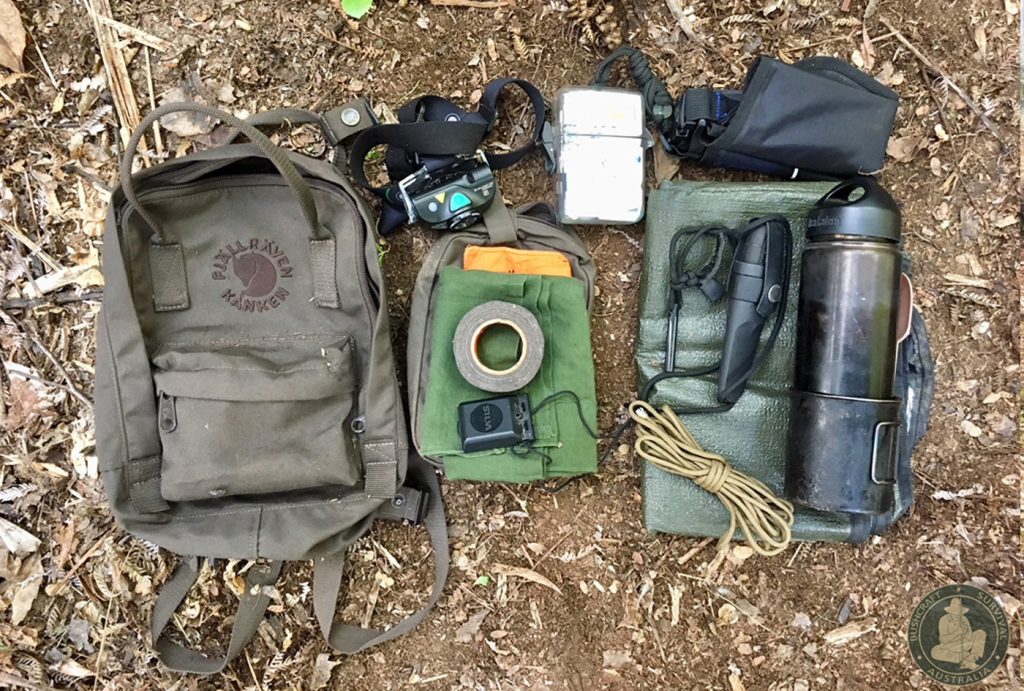
Australia is a vast country and many Australians like to travel off the the beaten track to see wild “untouched” places in order to experienced that feeling of being at one with nature.
However, many people go into these places ill equiped and with insufficient planning in case something goes wrong, often resulting in people getting lost, injured or worse, death! Many people in urban environments are also ill equipped and lack basic knowledge of what to do should an urban crisis or emergency occur.
The most common group of people who seem to get themselves into trouble are the “day hiker or visitor”. This group of people generally think… “She’ll be right, I’ll only be gone for a short time…” These people don’t tell anyone where they are going or when they will return. They don’t take a hat or enough water, don’t take a warm layer, a shelter or have the ability to make a fire.
If you are going into a wilderness area on a planned trip or even a local bushwalk for only a couple of hours, there are two key things you should do first.
1. Tell someone where you are going and when you expect to be back. Even if you are only going on a short day hike for a couple of hours! Have a game plan if you are not back!
2. Dress appropriately. Dress for the environment you are going into. Wear long sleeves and a hat to protect against the sun and have warm layers and a head covering for the evenings.
Below are 12 important items that everyone should have in their daypack when venturing into a wilderness area. Every item should be durable, portable and have multiple uses. The first five items are the most crucial as they are the items that are the most difficult and time consuming to produce in nature if you don’t have them.
Knowing what these items are will help you prioritise what is important and also what to manufacture from nature should you find yourself without them.
These same items and priorities are what you also need in an urban crisis or emergency, only the resources change.
12 IMPORTANT ITEMS
1. Cutting tool ( knife) This is probably the most important tool. Ideally it should be a full tang 5” (11cm) carbon or stainless steel knife without serrations or saws built in to it as these inhibit its practical us. Morakniv make good affordable general purpose knives for the outdoors including the HD Companion, Bushcraft Black, Edris and Garberg. A Leatherman multitool or Victorinox pocket knife is also a good smaller option. To make a cutting tool in nature requires flint and a knowledge of flint knapping.
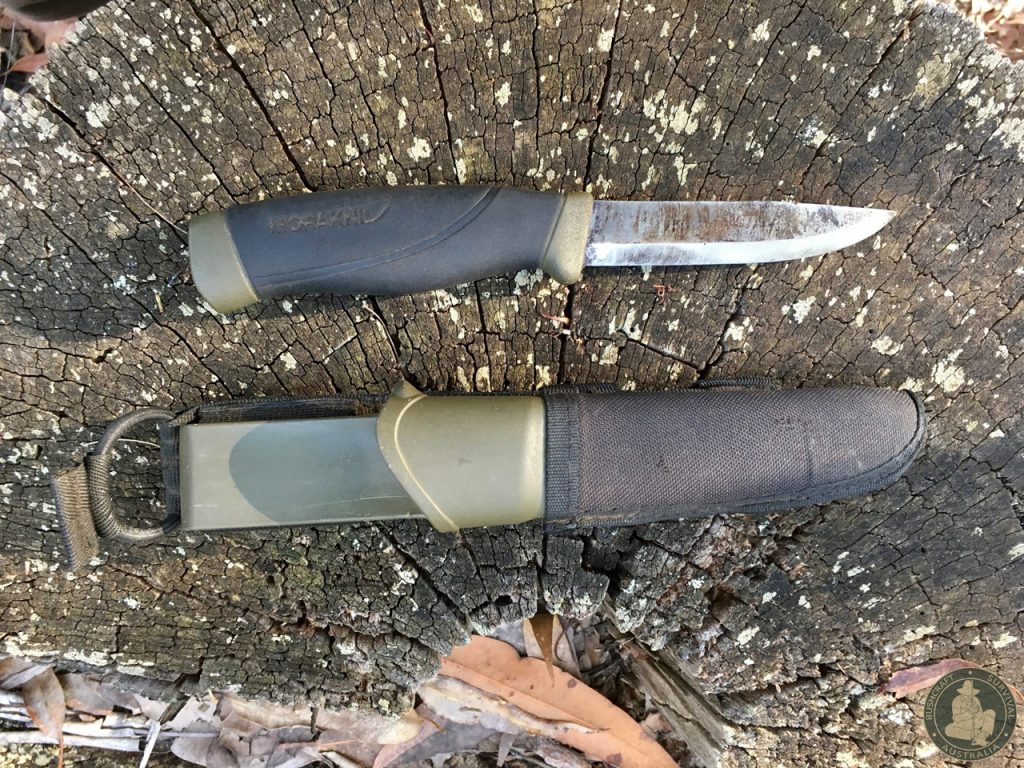

2. Combustion device (Ferrocerium Rod) If you don’t have a cigarette lighter or matches, the best thing you can have with you is a sparking tool such as a Ferro Rod, also known as a metal match or fire flash. This is a mixture of magnesium and different alloys that produces a hot shower of sparks when struck with an object that has a sharp 90 degree angle (eg. the back of a knife). It doesn’t give you guaranteed flame so you will have to learn how to find and prepare tinder in nature. To make fire from nature you will have to learn fire by friction.


3. Covering or shelter. This could be a re-usable space blanket/tarp which reflects up to 70-80% of your body heat back to you or a large heavy duty garbage bag which can be used as a raincoat, moisture barrier, ground sheet, water carrier, filled with leaves for insulation, cut open and tied into a shelter. To make a shelter from natural materials (lean-to, wickiup, A-frame etc) is very time consuming and requires a lot of resources.
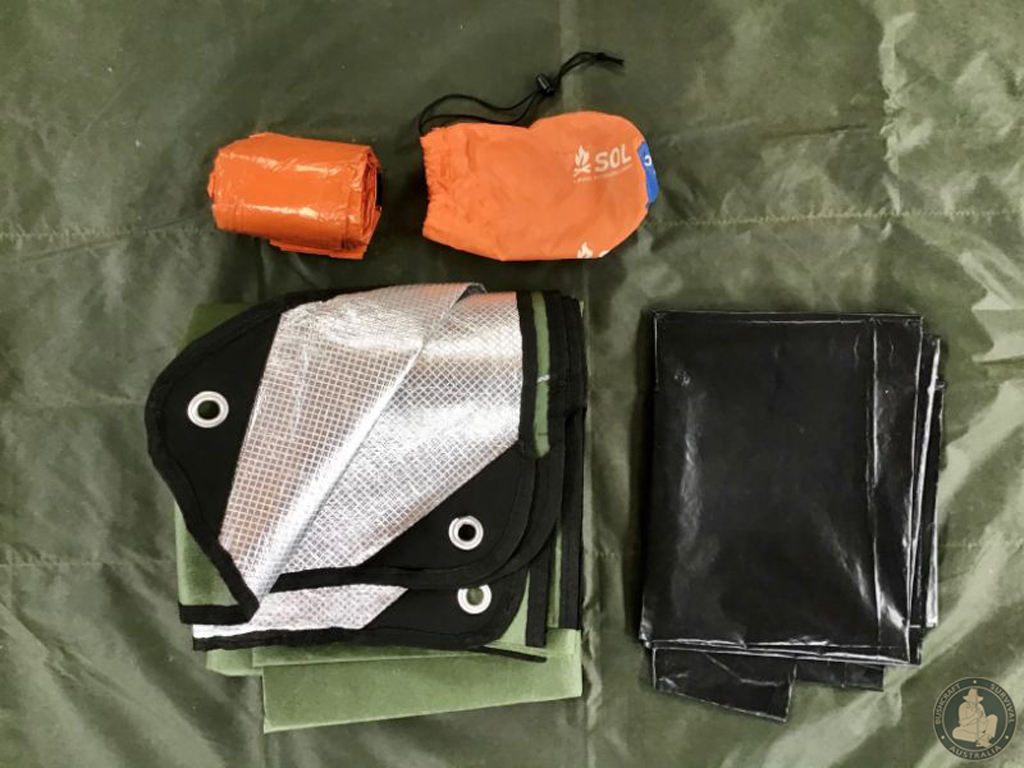

4. Metal container. Ideally pack a metal container and a nesting cup, as you need a way of carrying water as well as heating water. Boiling is the best way to ensure water is safe to drink. If you don’t have both, you should at least have a metal nesting cup to boil water in.
Kleen Kanteen make an assortment of good metal containers. To make a container from natural materials requires a knowledge of how to make a coal burned bowl, a folded paperback coolamon or bark containers, all which you can boil water in using hot rocks.
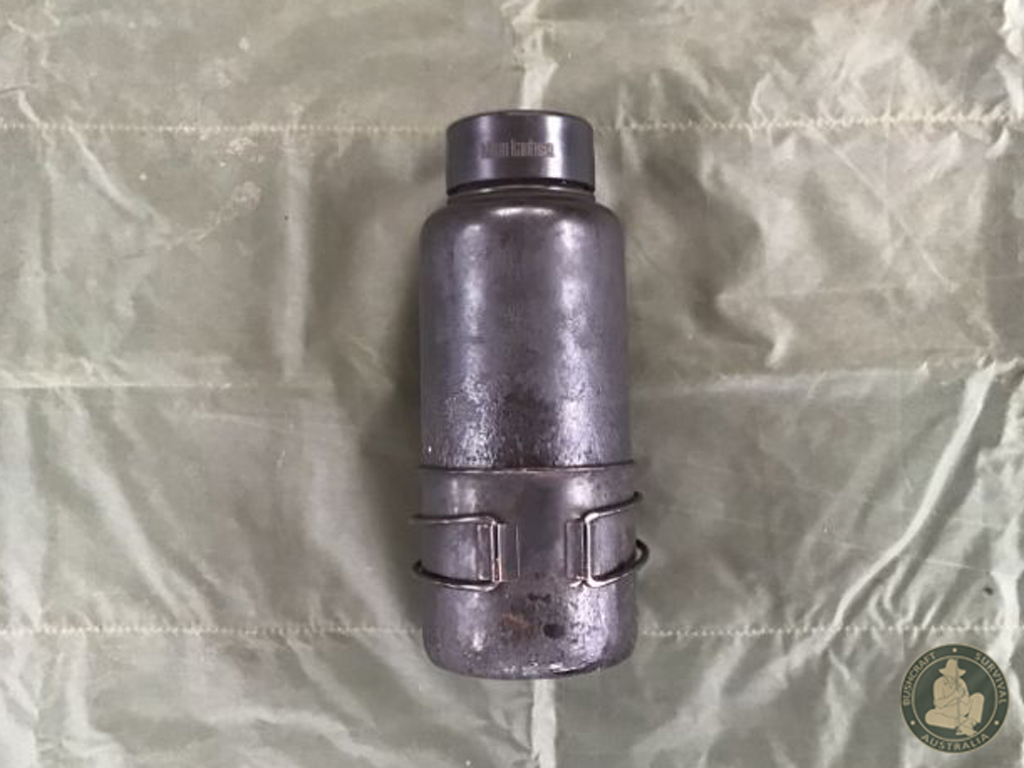

5. Cordage Parachute cord is the best as it has 7 inner strands and each one of these 7 strands can be broken down into 2 smaller fibres. If you break the cord down to these fibres, you can use them for fishing line, trap making and repair cord etc. To make cordage or string in nature is very time consuming and requires a knowledge of plant resources and string making.

6. Compass This allows you to stay on course when moving from A to B and aids in direction finding. A “sighting compass” also has a mirror that can be used as a heliograph or for first aid. “Silva” make good quality compasses. If you don’t have a compass you will need to learn about natural navigation and finding direction from the sun, stars and other means.
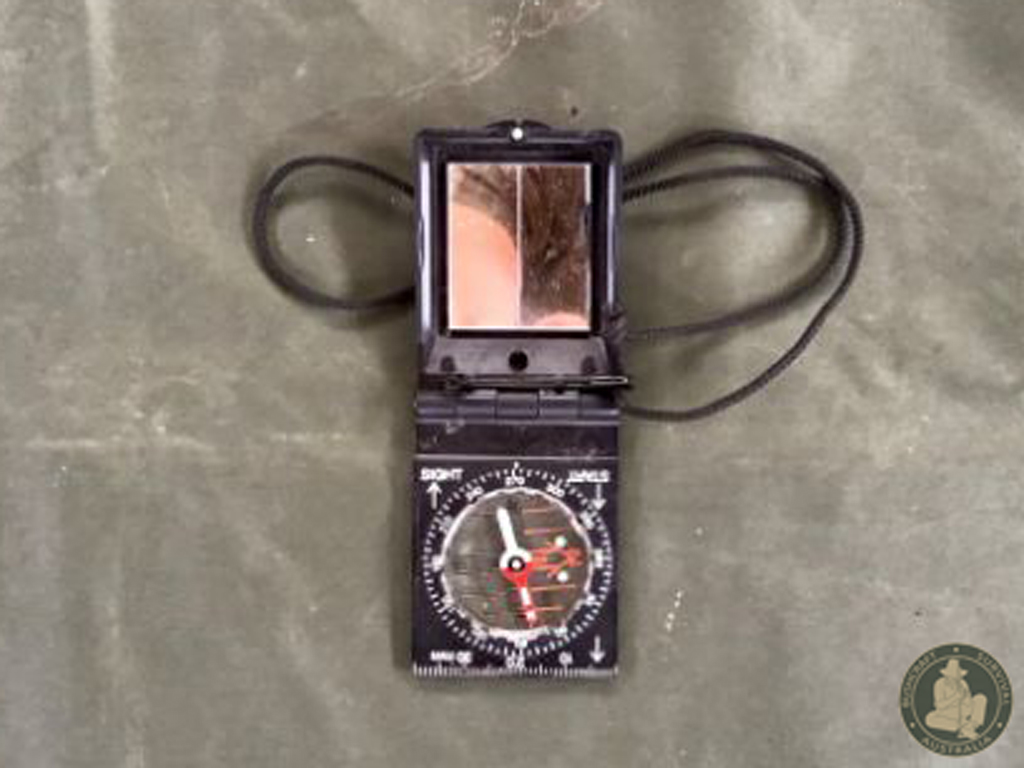
7. Cloth Bandanna This has multiple uses: head/neck scarf, filtering device, triangular bandage, sling, cordage, improvised bag, net, if 100% cotton can be used to make char cloth etc. An orange bandanna can also be used as a signalling device.

8. Duct tape used for mending things, water proofing, cordage, first aid, even to make an improvised water proof cup. A small roll of Gorilla tape is a good choice.

9. Head torch Used mainly as a light source but can also be used to make fire using the batteries and a piece of steel wool. “Ledlenser” make excellent head torches and portable lights.

10. Small first aid kit This is personal choice but should have any prescribed medicines, items to deal with small cuts, scratches, bites and stings, iodine and alcohol preps, antiseptic ointment, small vial of Condees Crystals (Potassium Permangenate) and an assortment of needles including a cloth sail needle for kit repairs.
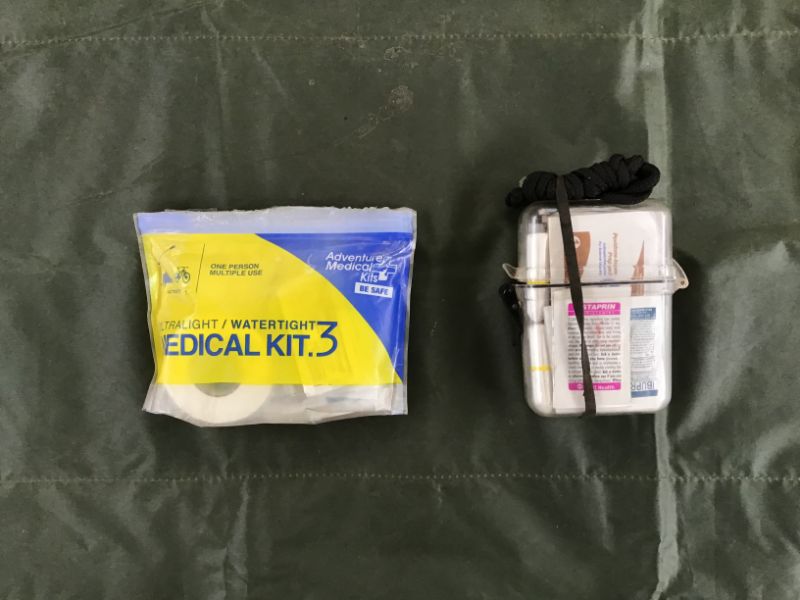
11. 5 Litre dry bag This can be used for water proofing, an extra water container or carry bag. “Overboard” make good quality dry bags.

12. Small bag/pack A small day pack or bag to carry your items in. “Fjallraven” make durable small bags and mini packs that these items will fit into nicely.
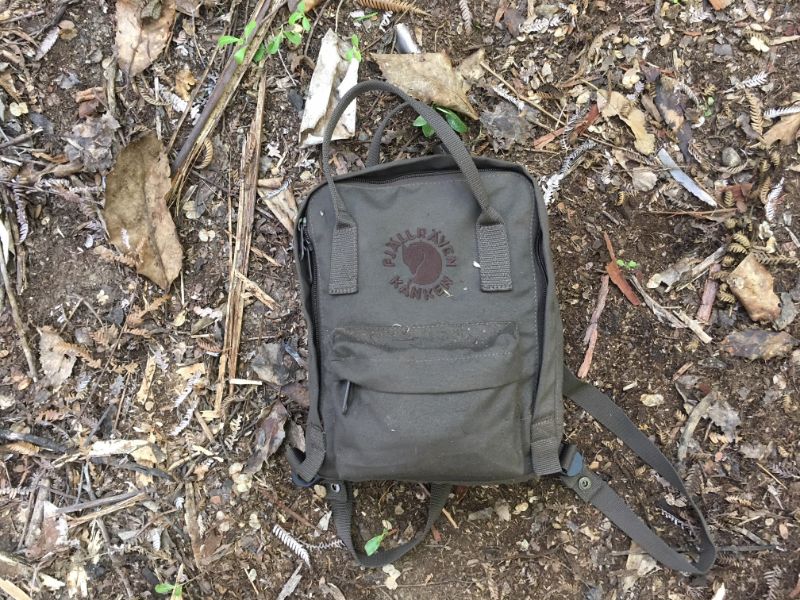
These 12 items are only suggestions and a base to build from and can be found in miniature in most military survival kits around the world.
Equipment is no substitute for knowledge which weighs nothing! The more you know, the less you have to carry!
